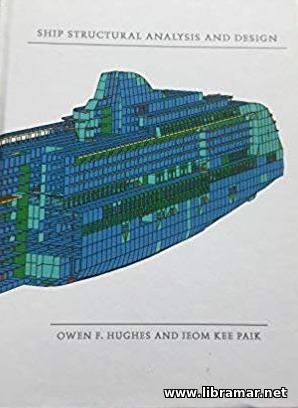 The content of the publication is focusing on the most important areas of the preliminary ship structural design, presenting the relevant information in clear and easily understandable manner. The authors have covered the critical aspects of the design together with the general requirements as well as standard established formats.
In the meantime it shall be understood that the dimensions of the vessel and sizes of all structural members involved are directly affecting the decisions made during the design process. One of the advantages of the approach applied by the authors of the volume is that it may be used with different ship types.
In addition to that, subject approach will allow ship designers to get to the optimum structures in accordance with their practical measures of merit. There are three structural design levels and the present publication focuses on the second level which is considered a central one.
The concept design is linked to the geometrical characteristics of the structure while the preliminary design is applied to establish the structural dimensions, or so-called scantlings of the essential structural members. Finally, the detail design deals with the local matters including openings, welding joints, local reinforcements etc.
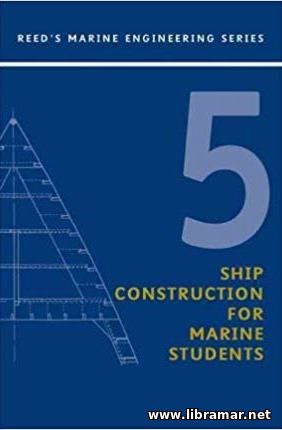 The types, sizes, functions and arrangement of the modern merchant fleet vessels vary considerably. Among these vessels there are passenger vessels, cargo vessels and vessels of specialized types suitable for the particular assignments. This is how the first chapter of this book starts – here the reader will get the basic information about the types of ships and terminology used.
Then, the author proceeds to the explanation of the stresses normally encountered in the different ship structures as well as the materials used for ship construction and welding aspects. Each part of the ship’s hull has been addressed in detail, from the bottom and up to the main deck and superstructure. There is a separate chapter in this volume solely devoted to the freeboard and tonnage, including freeboard assignment, the major provisions of the Tonnage convention and all relevant rules and regulations that shall be taken into consideration when developing the design of any ship.
The author has also dealt with the shipboard lifesaving appliances and arrangements, structural fire protection, ship classification, hull vibration, ship dynamics, insulation of the ships, prevention of corrosion to the hull including cathodic protection, painting, anti-fouling, drydocking activities and many other areas.
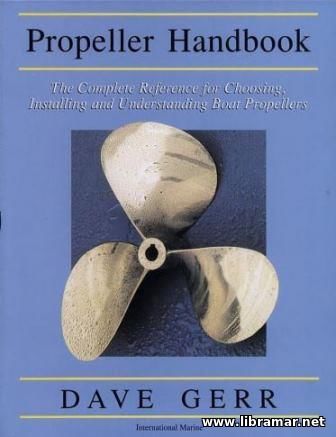 The original intention of the author of this publication was to provide all interested readers, including boat designers and boat builders in the first turn, with all necessary knowledge which they will use when selecting appropriate propellers for the boats. The content of the volume will be equally applicable to various types of boats from trawlers to high-speed powerboats. It shall be noted that if someone is interested in some particular application or vessel type, it is not required to go through the whole book.
We would rather recommend them to have a glance at the main aspects and then concentrate on the particular section with the type-specific information they need. The first two chapters of the book are covering the matters related to the boat power and speed, while the third chapter is describing the essential parts of the boat propeller together with the associated dimensions.
The following two chapters define and discuss the technical differences in propeller types and shapes of the propeller blades, plus the so-called “slip method” of selecting the propeller. The remaining chapters are dealing with the mathematical methods of selection, various installation methods, and special consideration that would be necessary for tug boats, outboard powered vessels and others.
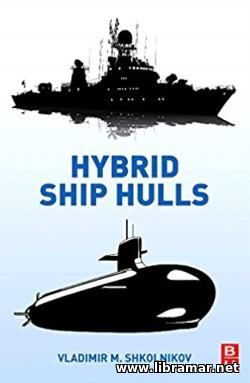 The present book is devoted to the ships featuring hybrid hull construction. The publication was written to provide shipbuilders, ship designers and other categories of people engaged in the industry, with the latest technological developments in the field of constructing hulls from the hybrid materials.
The content of the book will tell readers about the most important differences in processing of construction materials and also about different structural behaviors - this information should be taken into consideration in order to maximize the performance of the ship.
The author has addressed the relevant engineering requirements that are normally specific to the hybrid structures fundamental to the optimization of the ship design. The content of the book is fully covering the basic aspects of methodology and techniques that are unavailable today fro any other sources; it provides the technical knowledge required to support the ship hull design and facilitate the reliability of manufacturing.
The MATLAB codes have also been dealt with to enable the engineers apply the methods that have been covered in the book easier and according to their engineering tasks. Particular focus has been made on heavy-duty applications including innovative ship design engineering solutions.
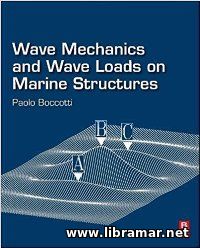 The present publication prepared by Paolo Boccotti was released to provide industry with the new perspective concerning the calculation of the wave forces acting on the marine structures through unifying the probabilistic and deterministic ways of approaching the theory of waves and through combination of the various methods commonly used together with the experimental measurements.
In his work, the author presents the QG, standing for the quasi-determinism theory as well as the use of SSFEs, i.e. small-scale field experiment approach, simplifying the techniques and findings that are honed in this publication in order to provide the practicing engineers and researchers with the newly introduced effective practical analysis methods. The author has included numerous real life case studies and worked examples to supplement the theory and let readers understand it easier.
The volume includes discussion on the software used for the analysis. An absolutely recommended book for everyone dealing with wave mechanics and calculations related to the wave loads since this is very important aspect of any marine structure design. All aspects of the design they shall be aware of have been covered in the pages of this popular volume.
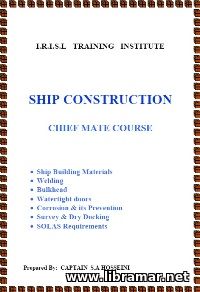 This training course was developed by Captain S. A. Hosseini and released by the I.R.I.S.L. Training Institute specifically to assist ship chief mates willing to have better understanding of the ship construction. Such understanding will definitely contribute to the safety of the voyage since knowing the construction of the vessel will help make better arrangements related to its use and also choose appropriate course of actions during various situations.
The material of this training volume is arranged in seven major sections starting from the materials commonly used for constructing ship hulls. The next two sections are dealing with the ship bulkheads including their construction and watertightness aspects, bulkhead testing etc., and welding covering different types of welding, testing the weld seams, preparation for welding, advantages of welding etc.
The weather- and watertight doors are discussed in the other section together with their construction, operation and maintenance. The rest of the book is dealing with the corrosion of the ship hull and methods of preventing corrosion, classification, survey and drydocking of the vessels, and finally the requirements of the SOLAS convention that shall be taken in consideration and complied with at all times.
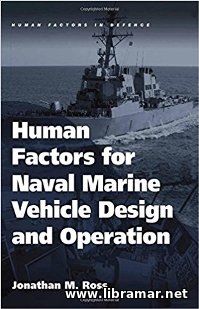 Everyone has own idea and opinion of what exactly human factors are. The reason for that is molding of the everyone's perspective with the particular field. Subject field can be design or experimental research, cognitive theory or acquisition, biology, anthropology or any other. Nowadays there is a driving demand for the naval specialists to focus on such important aspect as human factor.
Regretfully, the number of marine accidents continues to increase with the main cause being human error. It can be designer's or operator's error. The situation is worsened because of the decreasing manning of the vessels, lack of duly experienced operators, and operations carried out in high seas; you should also take into account the fatigue. One of the potential solutions could be automation; however the fact is that flawed automation system contribute to the maritime accidents.
The present publication is devoted to the human factors for the design and operation of the naval marine vehicles. The author has addressed the main aspects involved, including types of the marine vehicles, their functions and associated limitations and solutions, human stressors, areas of concern, enhancement of the human factors, HMI, standing for the human-machine interface, important design considerations and future trends.
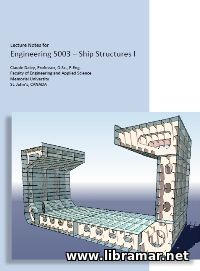 Here are the lecture notes for the Ship Structure course intended to facilitate the development of the good technical knowledge of the structure of the ship's hull. The main focus has been made by the authors of the course on the different types of the structural behavior on the basis of the fundamental concepts of mechanics of materials.
The content of the course is covering the design and assessment as well as drawing and reporting on the scantlings of the ship, i.e. design of the hull girder applied to the large vessels. Another important goal of the course is the development of the trainees' ability of making educated guess based on the good reasoning and very careful approximation of the problem.
The set consists of two courses. The first course No. 5003 addresses the structural features of the vessel, mechanical behavior, longitudinal strength and bean theory and associated equations, force and displacement methods applied to the indeterminate beams, shear stresses, torsion, plate bending, structural analysis methods, moment distribution, and other aspects.
This all is continued in the second course No. 6003 dealing with the elastic plate behavior, plastic and elastic bending, elastic buckling, local and overall stiffener buckling, fatigue and fracture problems, strain rate effects, engineering safety metrics, buckling of transverse and longitudinal plate panels, hot spot fatigue analysis, risk analysis, laterally loaded plates and other topics considered important.
|







